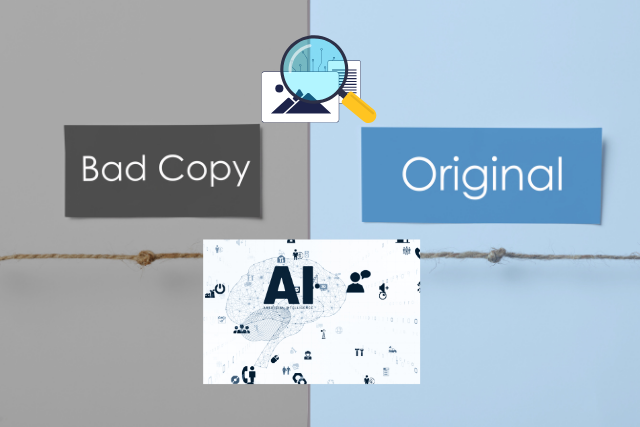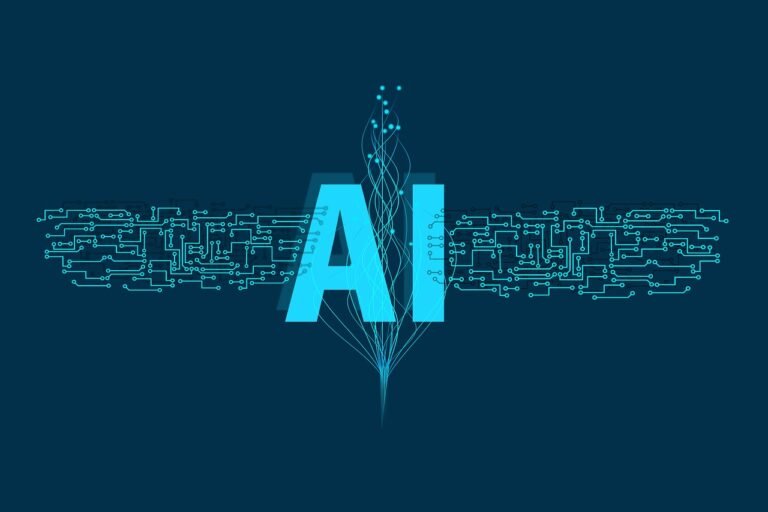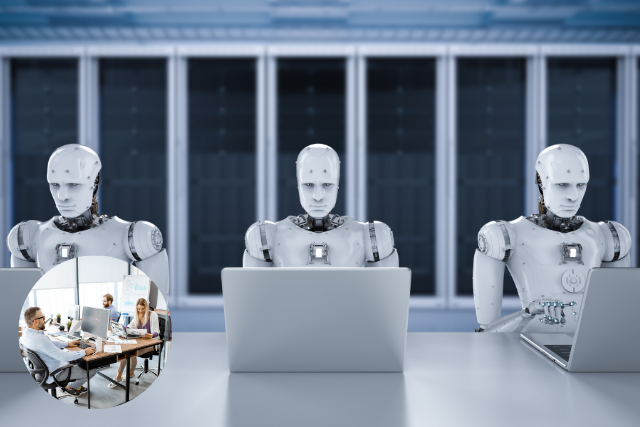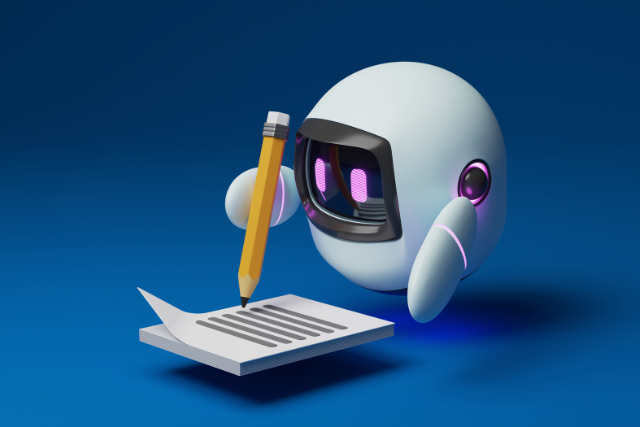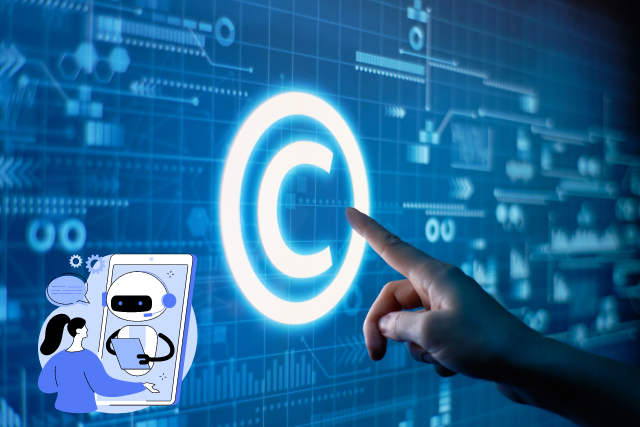Content authenticity is a cornerstone of credibility in any field. With the rise of AI-generated content and the persistent issue of plagiarism, distinguishing between original and copied or machine-generated text has become increasingly complex.
This guide will explore the intricacies of plagiarism and AI content, providing detailed insights into how you can identify and address these challenges using top-tier practices.
Understanding Plagiarism and AI-generated Content
What is Plagiarism?
Plagiarism involves using someone else’s work or ideas without proper attribution, presenting them as your own. It can occur in various forms, such as:
- Direct Plagiarism: Copying text verbatim from a source without quotation marks or citation.
- Paraphrasing Plagiarism: Rewriting someone else’s ideas without proper credit.
- Mosaic Plagiarism: Mixing copied phrases or ideas with original content without citation.
- Self-Plagiarism: Reusing your own previously published work without acknowledgement.
Types of Plagiarism
- Direct Plagiarism This is the most blatant form of plagiarism, where an individual copies another author’s work word-for-word without using quotation marks or giving credit. This can involve copying a paragraph, an entire article, or even a book. Direct plagiarism is easily identifiable and is often considered a severe breach of ethics.
- Paraphrasing Plagiarism Paraphrasing plagiarism occurs when someone rewrites someone else’s ideas or text in their own words without giving proper credit. This type of plagiarism is more subtle and complex to detect, but it is still unethical and a violation of intellectual property.
- Mosaic plagiarism, also known as patchwriting, involves borrowing phrases from a source without using quotation marks or finding synonyms for the author’s language while keeping the same general structure and meaning. This can be difficult to detect because it combines copied and original writing.
- Self-Plagiarism Self-plagiarism occurs when an author reuses significant portions of their previously published work without citation. This includes submitting the same work for multiple assignments or republishing an article in different journals without acknowledging the original publication.
Consequences of Plagiarism
The consequences of plagiarism can be severe and far-reaching, impacting various aspects of a person’s academic, professional, and personal life. They include:
- Academic Penalties: Students caught plagiarizing can face penalties ranging from failing an assignment or course to expulsion from their academic institution.
- Legal Repercussions: In some cases, plagiarism can lead to lawsuits and legal action, especially when it involves copyright infringement.
- Professional Consequences: Professionals found guilty of plagiarism can suffer damage to their reputation, loss of employment, and diminished career prospects.
- Ethical Implications: Plagiarism undermines the trust and integrity essential to academic and professional communities.
What is AI-generated content?
AI-generated content is created using artificial intelligence technologies, such as language models like GPT-3 and GPT-4. These models can produce human-like text based on the input they receive.
While AI-generated content can be valuable for various applications, it raises concerns about authenticity and originality, as it can sometimes be indistinguishable from human-written text.
Applications of AI-Generated Content
- Content Creation: AI can generate articles, blog posts, and social media updates, helping businesses maintain a consistent content output.
- Customer Support: AI chatbots and virtual assistants can provide customer support, answer frequently asked questions, and resolve common issues.
- Creative Writing: AI can write stories, poems, and other creative works, offering new perspectives and ideas.
- Data Analysis: AI can summarize reports and generate insights from large datasets, making it easier to understand complex information.
Ethical Concerns with AI-Generated Content
The use of AI-generated content presents several ethical challenges, including:
- Transparency: Failing to disclose that content is AI-generated can mislead readers and undermine trust.
- Quality: AI-generated content may lack the depth and nuance of human writing, potentially compromising quality.
- Originality: While AI can generate unique text, it is still based on existing data, raising questions about true originality.
Differences Between Plagiarism and AI-Generated Content
While plagiarism and AI-generated content pose challenges to content authenticity, they are fundamentally different issues.
Source of Content
- Plagiarism: The content is taken from an existing source without proper attribution. It is a direct violation of intellectual property rights.
- AI-Generated Content: The content is created by an artificial intelligence model based on the input it receives. It may not violate intellectual property rights but can still raise questions about originality.
Detection
- Plagiarism: Detected by comparing the content against existing sources. Tools use extensive databases to identify matches and flag copied content.
- AI-Generated Content: Detected by analyzing patterns and characteristics unique to machine-generated text. This requires sophisticated algorithms capable of distinguishing between human and AI writing styles.
Ethical Implications
- Plagiarism: Unethical as it involves stealing someone else’s work and passing it off as your own.
- AI-Generated Content: Ethical considerations depend on how it is used. If appropriately disclosed, it can be acceptable. However, passing AI-generated content as human-written without disclosure can be misleading.
Impact on Credibility
- Plagiarism: Severely damages the credibility of the content creator. It can lead to academic and professional consequences.
- AI-Generated Content: This can impact credibility if not disclosed, but if used transparently, it can enhance productivity and creativity without undermining trust.
Identifying Plagiarism and AI-Generated Content
Identifying Plagiarism
To identify plagiarism, consider the following steps:
- Use Plagiarism Detection Tools Tools like Turnitin, Copyleaks, and Grammarly’s plagiarism checker to scan your content and compare it against extensive databases to identify matches. These tools provide detailed reports that highlight copied passages and their sources.
- Check for Inconsistencies: Look for writing style, vocabulary, and tone changes. Sudden shifts may indicate copied content. For example, a document section with a different voice or complexity level could be a sign of plagiarism.
- Verify Sources: Ensure all sources are correctly cited and referenced. Missing citations or incorrect references can be a red flag. Cross-check citations against the reference list to ensure accuracy.
- Review Suspicious Passages Manually review flagged passages to confirm if they are plagiarized. This involves comparing the flagged text with the source to determine if proper attribution has been given.
Identifying AI-Generated Content
To identify AI-generated content, consider the following steps:
- Use AI Content Detection Tools Tools like Originality.AI, ZeroGPT, and OpenAI’s GPT-3 Detector to analyze text and identify patterns indicative of AI generation. These tools use machine learning algorithms to detect the unique characteristics of AI-generated text.
- Analyze Writing Style AI-generated content may have a consistent and overly formal writing style. Look for repetitive phrases and unnatural sentence structures. AI models often produce text with a high degree of fluency but may lack the subtlety and variability of human writing.
- Check for Contextual Understanding: AI-generated content may lack deep contextual understanding and coherence. Look for logical inconsistencies or superficial analysis. For example, AI-generated text might provide factual information but fail to offer nuanced insights or context.
- Cross-Reference Content Compare the content with known human-written works. AI-generated text may lack the nuance and creativity of human writing. Look for originality and depth in the analysis and presentation of ideas.
Best Practices to Ensure Content Authenticity
To ensure the authenticity of your content, follow these best practices:
- Use Reliable Sources: Always use reputable sources and cite them properly. This enhances the credibility of your work and provides a foundation for your arguments.
- Paraphrase Effectively When paraphrasing, ensure you are not merely changing a few words but genuinely rephrasing the idea in your own words. Effective paraphrasing involves understanding and expressing the original content in a new way.
- Employ Detection Tools Regularly use plagiarism and AI content detection tools to check your work before publication. These tools can help you identify potential issues and make necessary corrections.
- Maintain Transparency If using AI-generated content, disclose it transparently to your audience. This builds trust and maintains credibility. Indicate which parts of your content are AI-generated and provide context for its use.
- Develop Original Ideas Focus on creating original content by brainstorming and researching extensively. Original ideas add value and authenticity to your work. Invest time in understanding your topic and presenting unique perspectives.
Conclusion
In the age of digital content, maintaining authenticity is paramount. Understanding the differences between plagiarism and AI-generated content and how to spot them are crucial skills for content creators, educators, and businesses.
By employing the right tools and following best practices, you can ensure the originality and credibility of your content, fostering trust and respect among your audience.
Frequently Asked Questions
What is the difference between plagiarism and AI-generated content?
Plagiarism involves using someone else’s work without proper attribution, while AI-generated content is created using artificial intelligence technologies.
How can I detect plagiarism in my content?
Use plagiarism detection tools like Originality.AI, Copyleaks, and Turnitin to scan your content against extensive databases.
What are some tools to detect AI-generated content?
Tools like Originality.AI, Copyleaks, and OpenAI’s GPT-3 Detector can help identify AI-generated text.
Why is it essential to detect AI-generated content?
Ensuring content authenticity and originality is crucial for maintaining credibility and trust with your audience.
Can Grammarly detect AI-generated content?
While not explicitly designed, Grammarly can flag unnatural writing patterns that may indicate AI generation.
Is it possible to detect AI-generated content with open-source tools?
Tools like Hugging Face’s transformers library provide pre-trained models that can be adapted for AI content detection.
How accurate are AI content detectors?
Accuracy varies by tool and model, but advanced tools like Originality.AI and Copyleaks accurately detect AI-generated content.
Can AI content detectors be integrated with other platforms?
Many tools, such as Turnitin and Copyleaks, offer API access to integrate various platforms.
What are the challenges in detecting AI-generated content?
The sophistication of AI models can make detection challenging, requiring advanced algorithms and constant updates to detection tools.
How can I ensure my content is original?
Use plagiarism and AI content detection tools, and always attribute sources appropriately to ensure the originality and credibility of your content.

